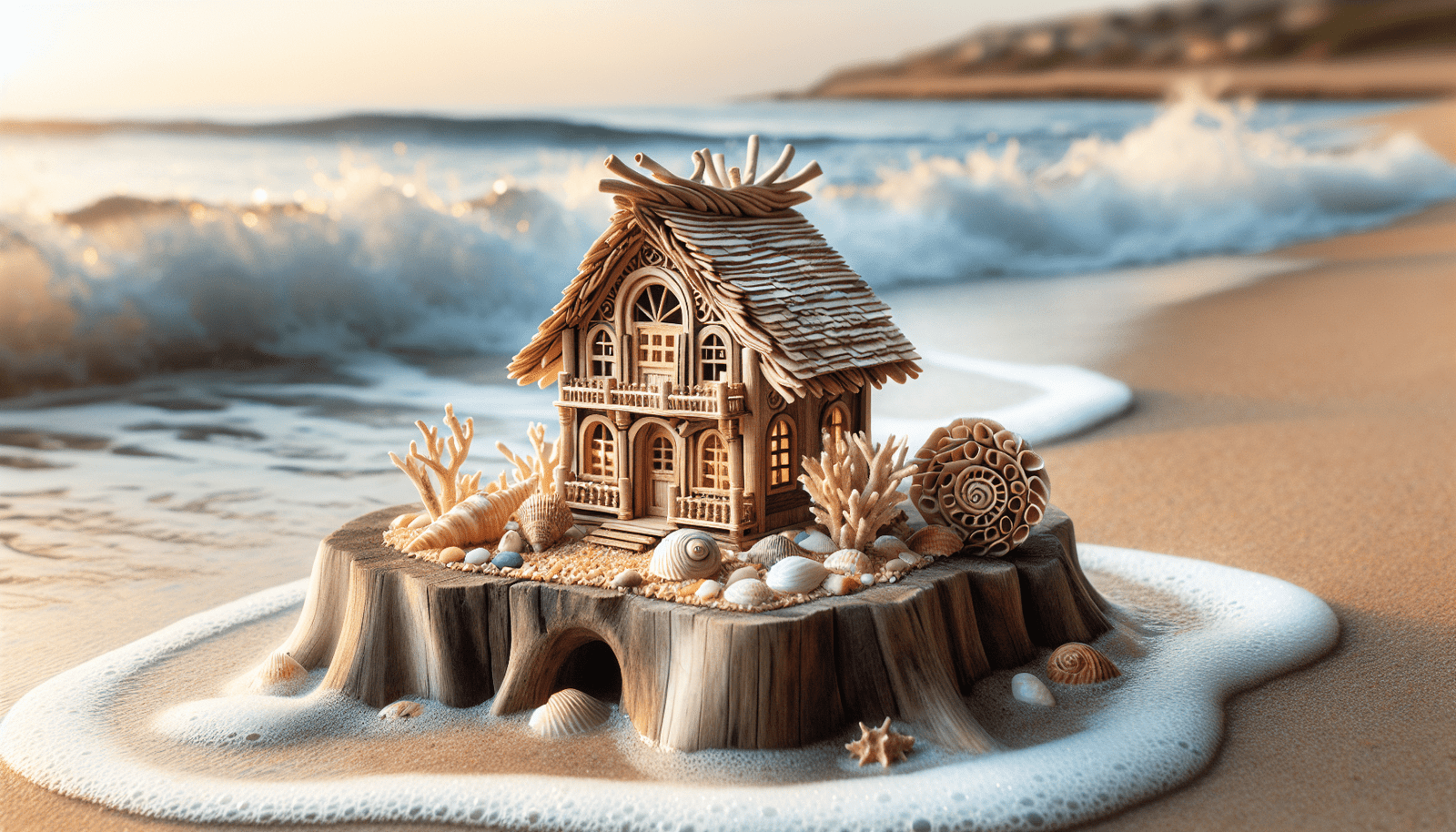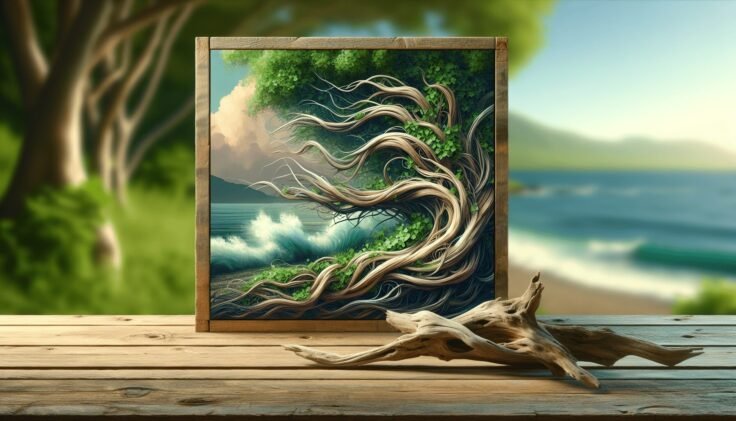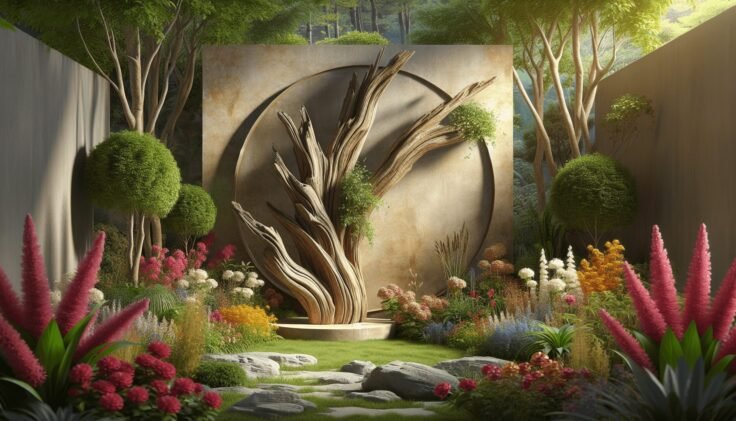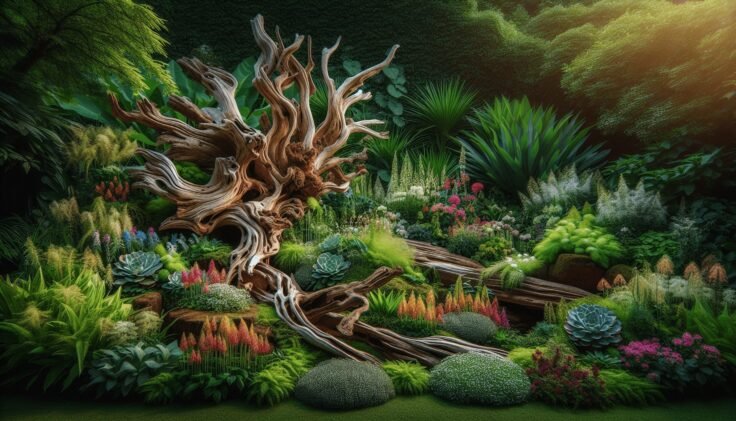Have you ever gazed at a piece of driftwood and wondered about the story it might tell? There’s something inherently captivating about these naturally weathered pieces of wood—perhaps it’s their journey through rivers and oceans, or the way nature shapes them into unique forms. If you’ve ever felt inspired to create something magical from these pieces, then driftwood miniature houses could be your new favorite project. Let’s explore how you can transform ordinary driftwood into enchanting little homes!

Understanding Driftwood
What is Driftwood?
Driftwood is wood that has been washed onto a shore, riverbank, or beach by the action of winds, tides, or waves. These pieces often have a distinctive, weather-beaten appearance, resulting from prolonged exposure to water and sunlight. Each piece of driftwood is unique, with its own distinct shape, color, and texture.
Why Use Driftwood for Miniature Houses?
Driftwood offers a natural, rustic charm that perfectly complements miniature houses. Its varied shapes and textures provide endless creative possibilities. Using driftwood also embraces sustainability, repurposing natural materials instead of synthetic ones.
Gathering Your Materials
Selecting the Right Driftwood
Before starting your project, you need the right pieces of driftwood. Look for pieces that have interesting shapes or resemble structures you might use in a house, such as flat pieces for roofs or long, slender pieces for chimneys or fence posts.
Additional Materials
Apart from driftwood, here are some essentials you’ll need:
- Glue: A strong adhesive, such as wood glue or a hot glue gun, to hold your structures together.
- Cutting Tools: A small saw or craft knife to shape your pieces as needed.
- Paint and Brushes: For adding color or details to your houses.
- Sealer: To protect the wood and give it a finished look.
- Additional Decorations: Items like pebbles, moss, shells, or miniature accessories to enhance your design.
Preparing the Driftwood
Cleaning and Drying
It’s crucial to clean your driftwood before use. Start by rinsing it thoroughly to remove sand and debris. For a more thorough clean, soak the wood in a solution of water and vinegar, which can help remove any remaining salt and potential pests. Once cleaned, let the wood dry completely—this may take several days depending on the humidity and size of the wood.
Shaping Driftwood
While driftwood comes in many interesting shapes, you might need to refine it a bit. Use a saw to cut larger pieces down to size or a craft knife for more precise shaping. Remember to work with the natural form of the wood to maintain its unique character.
Constructing Your Driftwood Miniature House
Creating the Base
Start by choosing a sturdy, flat piece of driftwood to serve as the base of your house. This will provide stability for your structure and a starting point for layout. You can place additional smaller pieces around the base to create the appearance of landscape or garden elements.
Building the Structure
Once you have your base, begin by arranging the main elements of your house. Use flat, wide pieces for floors and roof panels, stacking or layering them to create walls. Secure each piece with glue, allowing sufficient time for it to set before moving on to the next.
Adding Details
This is where you can let your creativity shine. Consider carving or affixing door and window shapes onto the walls. Use slender bits of driftwood for railings, fences, or chimney stacks. This is your chance to personalize the house with unique touches.
Painting and Sealing
You have the option to paint your driftwood house, though many prefer to leave the wood’s natural hues. If you decide to add color, use water-based paints for a more subtle, washed-out effect. Lastly, apply a sealant to protect your house from moisture and ensure it withstands the elements.

Decorating and Finishing Touches
Landscaping with Natural Elements
Enhance your driftwood house with elements like moss roofs, pebble pathways, and tiny shell gardens. These natural additions create a whimsical, enchanted appearance befitting of a fairy tale.
Incorporating Miniature Accessories
Seek out miniature furniture or inhabitants that can bring your driftwood house to life. Consider tiny figurines, miniature garden tools, or little lanterns to give a sense of occupancy and activity.
Displaying Your Driftwood Creation
Indoor Display Ideas
Your driftwood house can become a conversation piece indoors. Place it on a shelf with complementary decorations, perhaps accompanied by coastal-themed art or a collection of other unique miniatures.
Outdoor Display Ideas
If you’ve treated your house with weatherproof sealant, consider displaying it in the garden. Nestle it amongst plants or create a designated area for a fairy garden, where it can be surrounded by flowers and nature.
Additional DIY Driftwood Projects
Beyond Houses: Other Driftwood Crafts
Once you’ve mastered making miniature houses, consider expanding into other projects. Driftwood can be used to create picture frames, decorative wall art, or even functional furniture like tables and coat racks. The possibilities are boundless.
Sharing Your Craft
Consider sharing your driftwood creations with a community of crafters. Join online forums dedicated to driftwood art or participate in local craft fairs. Many find joy in both creating and sharing their work with others.
Safety and Preservation Tips
Crafting Safely
Always prioritize safety while crafting. Use tools with care, and have a first-aid kit handy for any minor injuries. Work in a well-ventilated area, especially when using glue and sealants.
Maintaining Your Driftwood Pieces
Over time, exposure to elements can cause driftwood to degrade. Periodically check your creations for signs of wear, and reapply sealant as needed to extend their lifespan.
Conclusion
Creating driftwood miniature houses is a delightful way to use natural materials to craft something extraordinary. It’s a hobby that combines art, nature, and storytelling, offering endless opportunities to express your creativity. Whether you keep your creations for personal enjoyment or share them with others, each piece is a testament to the beauty and wonder that can come from the simplest materials. So next time you see a piece of driftwood, remember the enchanting little world you can build just beneath the surface.

















